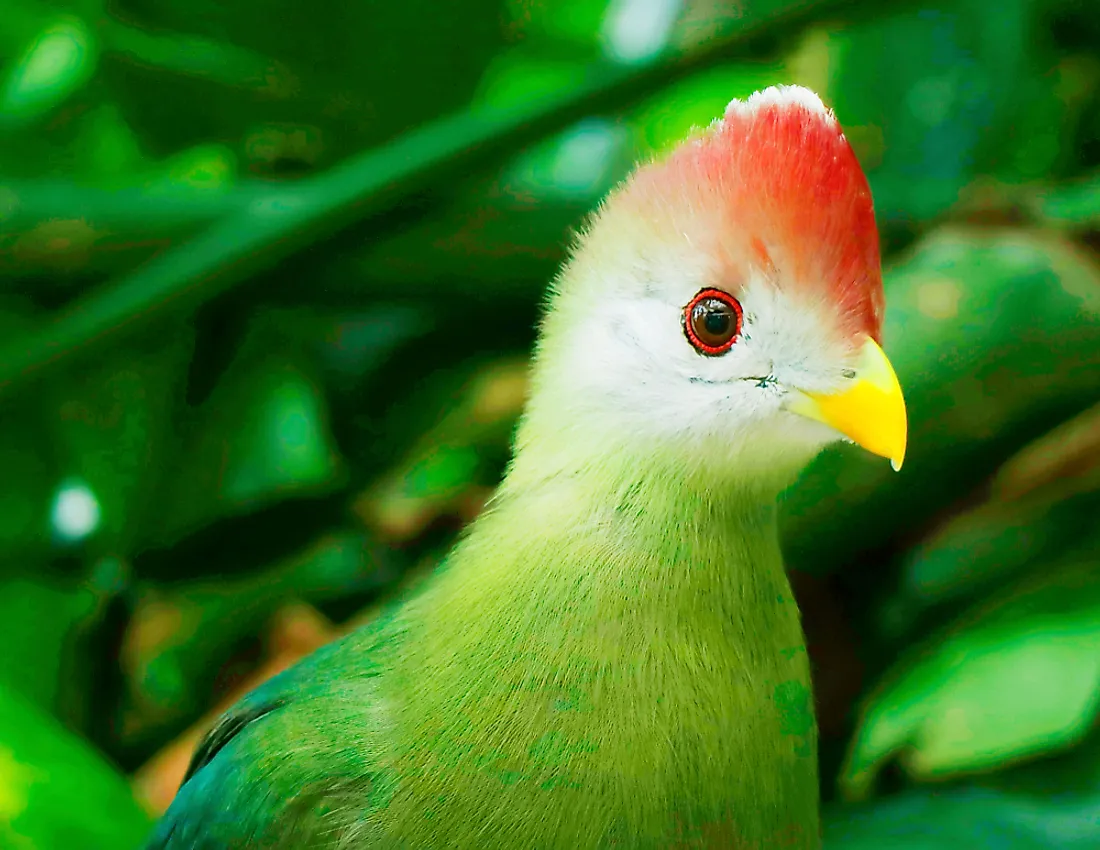Ecological Regions Of Somalia

Somalia has a warm and arid climate across most parts of the country, though precipitation and the wind can be highly variable in places at certain times of the year. Climate variation rarely occurs due to Somali proximity to the equator. Northern Somali is a maritime semi-desert covered with shrubs, small bushes and grass clumps and shallow watercourses. This region is part of the Ethiopian xeric grassland and shrublands ecosystem. The northern, northeastern and north-central vegetation constitutes of the scattered trees of Acacia and patches of grass. Along the Indian Ocean, the Hobyo grasslands and shrublands ecosystem dominates with scattered scrub, grass clumps, and coastal sand dunes. The East African mangroves are found along the coast from Kismaayo to the Kenyan border. Below, the ecosystems of Somalia are briefly looked at.
East African Mangroves
The ecoregion consists of mangrove swamps lying proximate to the coasts of East Africa's Indian Ocean shorelines. The ecoregion is shared among Kenya, Tanzania, southern Somalia, and Mozambique. These coastal regions experience two monsoon seasons every year characterized by rising seas and strong ocean currents in Mozambique and high rainfalls in Northern Tanzania and Southern Kenya. The East African mangrove forests belong to the biome of tropical and subtropical moist broadleaf forests.
The ecosystem's flora includes many tall trees rising to 30 meters or higher. The vegetation is basically of two types, namely the mangrove fed by river inlets in which salt accumulates and the mangroves fed by freshwater rivers on the coast of Watamu and Lamu in Kenya. A wide range of fauna inhabits the mangroves, from the Sykes Monkeys, antelopes. African buffalo, and elephants grazing on the swamp fringes to the fish, crustaceans, and mollusks found in the water. The Hawksbill turtles, olive ridley, green turtle and hippopotamus feed in the swamps. The ecosystem is home to a diverse flora and fauna. The corals protect the ecosystem from ocean tides and storms providing important feeding grounds for migratory birds such as the curlew sandpiper and little stint, and waterbirds including the crab-plover, and seabirds such as the roseate tern.
Ethiopian Xeric Grasslands and Shrublands
The ecosystem is a semi-desert strip near the Red Sea and along the Gulf of Aden in Ethiopia, Eritrea, and Somali. The topography is characterized by hills and massifs rising to 1300 meters and fault-induced depressions such as the Danakil, which lies 155 meters below sea level. The area is active tectonically and experiences many earthquakes and active volcanoes. The ecoregion has a hot and dry climate. Rainfall is extremely low with a year average of around 100 to 200 millimeters. The dragon tree is the primary flora of the ecoregion. The Somali Wild Ass, Dorcas gazelle, Beira, Beisa oryx, and gerenuk constitute the dominant fauna. Dry habitat species including the gecko are also common. Political instability is the biggest problem facing the biodiversity and survival of the ecosystem. The nomadic lifestyle also contributes to environmental degradation and the governments of these regions have few rules, and protective measures are only found in Ethiopian side.
Northern Zanzibar-Inhambane Coastal Forest Mosaic
The ecosystem is part of the tropical moist broadleaf forest biome of the East African coast forming the southern boundary of Somalia. The ecosystem consists of savanna, forests, and swamps. To the north there are drier and open woodlands and shrublands, to the east is the Indian Ocean, the north constitutes of the Somali Acacia- Commiphora Bushlands and Thickets, the Eastern Miombo woodlands to the southwest. The ecosystem is home to endemic bird species such as the Treron and Otus species on the Island of Pemba. Some species are also found in mainland Kenya along the Tana River and the coastal forests remnants.
Somali Montane Xeric Woodlands
This ecosystem runs across the Horn of Africa. It contains the remnant of plant species from the Macaronesian, Mediterranean, and Afromontane regions. The area receives the highest rainfall in Somali. The fauna and flora of the habitat are relatively stable due to low human encroachment thanks to the distant escarpments and plateau areas though hunting larger animals have reduced their population. Strict endemic reptiles of the area include the spalerosophis and Leptotyphlops snakes and the pseuderemias lizard. The Somali Pigeon and thrush are found in the North Somali Mountains. The gazelles are more widely distributed than other mammals but suffer from over-hunting and overgrazing of the livestock. The biological value of most of the ecosystem in Somali is unknown. Years of political instability in the country makes accessibility and studies difficult. The information existing on the biodiversity of the ecosystem is old and potentially unreliable due to the change in climate, urbanization, civilization, and other human activities and natural phenomenon.
Ecological Regions Of Somalia
| Ecological Regions of Somalia (as per World Wide Fund for Nature) | Biome |
| Ethiopian Montane Forests | Tropical and Subtropical Moist Broadleaf Forests |
| East African Mangroves | Mangroves |
| Ethiopian Xeric Grasslands and Shrublands | Deserts and Xeric Shrublands |
| Hobyo Grasslands and Shrublands | Deserts and Xeric Shrublands |
| Northern Zanzibar-Inhambane Coastal Forest Mosaic | Tropical and Subtropical Moist Broadleaf Forests |
| Somali Acacia-Commiphora Bushlands and Thickets | Tropical and Subtropical Grasslands, Savannas, and Shrublands |
| Somali Montane Xeric Woodlands | Deserts and Xeric Shrublands |











